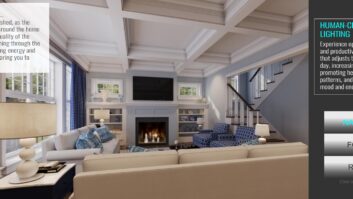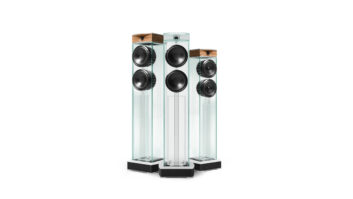First, the good news: The CI industry continues to increase the awareness of its existence to vital trade partners such as builders. The bad news: We still have a long way to go with the upper tiers of the trades — architects and interior designers.

“Of the three trades — architect, designer, and builder — integrators tend to go after builders first, architects second, and then interior designers,” says Josh Christian, CEO of the Home Technology Association. “As a result, here we are in 2024, and it’s amazing how many interior designers don’t know that there is such a trade as an integrator.”
Christian would know, as he spends a good deal of time teaching and reaching out to designers and architects about the value of working with integrators — HTA Certified ones in particular, who have been vetted to be good representatives of the industry. In fact, HTA launched an opt-in program called “HTA Design Partner” for design-centric integrators looking to forge profitable relationships with designers. It is designed to build trust with designers and educate them that they need to engage integrators as early as possible.
“There’s a problem in our industry, and the integrators — even many good HTA Certified ones — are not positioning and marketing their companies to the trades as they should,” says Christian. “A good company has a design and consultation phase — that’s Phase One. This phase has its own deliverable, and it gives integrators a lot of valuable interaction with the architect and designer, which is a great thing. Phase Two is what designers already know about us — the contracting phase. That’s what they think of about this trade, if they think of us at all. We recommend the integrator also discuss Phase Three, which is ongoing customer service. The three distinct phases of what integrators do is even baked into the HTA Design Partner logo, which has the words ‘design,’ ‘deploy,’ and ‘maintain’ in it.
“I ask our dealers to learn from my experiences speaking with architects and designers — they don’t understand everything you do. So, go out there and explain that you are a three-phase company. It is a game-changer, because when they see you as a designer, you’re considered an equal, not some contractor. You are now a peer and part of the team — someone that would be brought in early.”
This is an area that is ripe for growth with dealers, with so many integrators focused on builders, the opportunities in reaching out to interior designers are wide open.
Real-World View
The benefits of working with interior designers can be seen in Tune Street Design Center, located in the Berkshires in Massachusetts. In an incredibly prescient move, owner Luke Germain hired someone to do CAD drawings for his firm in 2014. Two years later, he closed the retail side of his business, moved to a location off of Main Street, and focused the company’s efforts on working with architects and designers, who were already coming to him thanks to the shop’s CAD abilities.
“We found that the builder was getting in the way of the conversation,” explains Germain. “So, we had to go around the builder and go directly to the people who make the house look the way the homeowner wants it to. Then we had to educate them and help them to understand that we can be a part of the design decisions and we can help them make it look the way the client wants it at the price that they want to get to. We took that idea and ran with it.
“We moved to our new location and added ‘Design Center’ to our name. We didn’t know what was going to happen, and a couple of months in, we realized it completely legitimized us in the space. Suddenly, we were getting calls and plans just emailed to us from architects and designers, with most of the business coming in through word-of-mouth.”
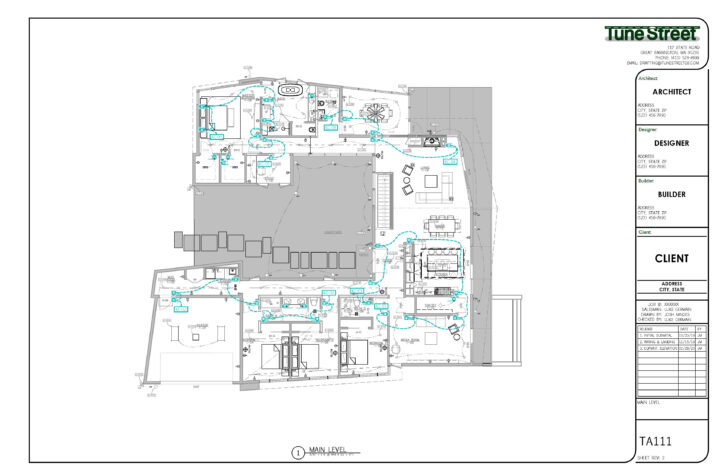
The forward-thinking company has not looked back and has more than doubled its business since closing its retail side. It is also not standing still and has recently added a new category that further cements its place on the design team.
“We just added lighting fixtures this year,” Germain notes. “We are working with designers and architects to educate them on lighting. We’ll also sell wholesale to the architect, designer, or electrician and hold seminars to teach them about lighting. It is a new thing for us, so we’ll send out a lighting fixture quote for every new project we do, even if we’re not doing that part of it. That is just our way of letting them know our recommendations for the brands that we sell, and that we can answer any questions that they have.
“Our main goal with everything we do is to try to minimize the damage and get to things before anything gets wired.”
Benefits for the Interior Designer
While the benefits of working together are clear for the integrator, many interior designers will need to be educated on what’s in it for them. Fortunately, there is a lot that integrators can offer designers.
“Interior designers don’t understand the, ‘What’s in it for me if I do bring in an integrator?’” says HTA’s Christian, “but once they talk to an integrator, a good one, it’s very easy to answer: CIs let them drive instead of being reactionary to the process. When the clients say they want this or that technology, then the designers are on their back foot thinking about how they have to accommodate this thing that just got foisted on them. And that client might bring in their own ‘AV guy’ who might not be a good team player. Now the designer is at the whim of this random person. So, what’s in it for you, designer, is if you go and build a great relationship with an integrator, one that understands and respects you, you’re in control.
“The good news is they’re a pretty easy target because they’re looking for someone to be their savior on technology. And from the polls I have done, it seems the majority do not have those relationships at all. There is lots of blue sky out there. Of course, the other challenge is that designers know us as ‘the folks that put in technology,’ and that has typically been a negative experience. So, you have got to overcome the guilty-until-proven-innocent syndrome. This is where HTA Certification and the HTA Design Partner designation helps in building trust.”
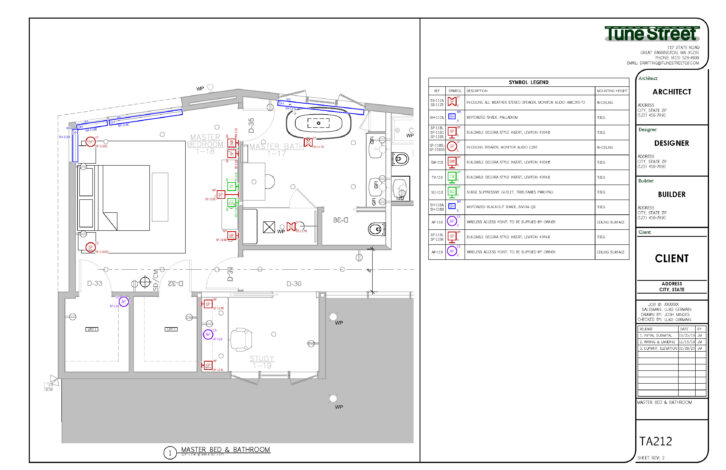
Integrators can provide more than control for the interior designer — they are also a source of revenue. “An interior designer may hire you directly and add fees to the contract as they negotiate with the client,” adds Christian. “Or they may charge project management fees to the client for their design collaboration work with you. You can also offer interior-related products at a discount that you may then mark up. This last option typically happens on ‘crossover’ products like motorized shading and theater or media room seating.”
Christian warns against having the interior designer add markups without dealer input, as it can cost the integrator jobs when the client prices it out and can easily find a lower bid. He suggests that the designer discuss with the client that the designer needs to be compensated for the design work between the integrator and the designer. Clients do not have a problem with paying their interior design for their design time. The problems arise when the designer doesn’t have that conversation with the client and instead wants fees hidden within the proposal, which then make it overly inflated.
“I remember this phenomenal job that I wanted badly,” he recalls, “a beautiful historic home. But the interior designer added so much money on top of our proposal that another company that is typically very expensive was substantially cheaper than the marked-up proposal! We lost the project because the interior designer got too greedy.”
Earning Trust
Every trade has its idiosyncrasies, and working with architects and designers involves a lot of coordination and managing of egos while leaving your own at the shop.
“There are massive egos with architects and designers, and the client may have one, too,” says Tune Street Design Center’s Germain. “There is no ego here — let’s just work together. And don’t be territorial about what you’re doing. If the designer is not interested in what your solution is and is comfortable with something that you don’t sell, support them anyway. Try to be as supportive as you can and don’t push them in the wrong direction when it’s clearly not what they’re looking for in their end product. We can always make some changes down the road.
“I find that interior designers like us to be quick and responsive with documentation samples and overall general knowledge of what they are thinking of. When you have the intuition to enter a project with the mindset of being a partner with the interior designer, it changes the way you think about technology. When they realize your intention for cohesion when you’re communicating with them and when you’re constantly backing them up to the client, it helps them relax and feel comfortable with you. It also helps you understand the scope of the project; and where the client is coming from through the interaction with the designer. I feel like that’s the most important thing that they care about.”
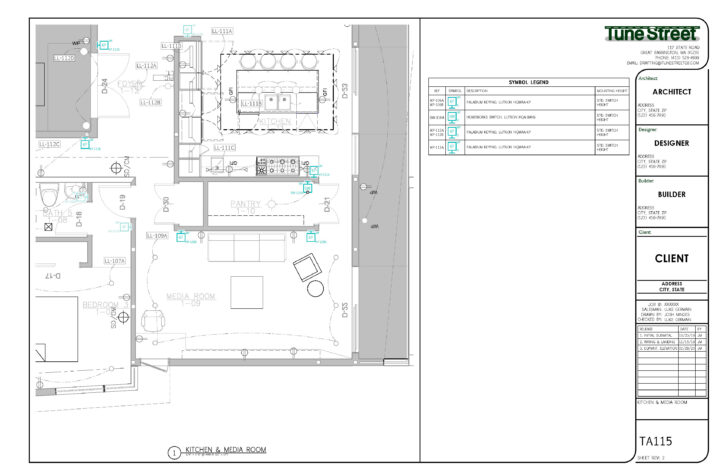
Homeowners also develop deep ties with their interior designers, and integrators should never get in the middle of that. “Homeowners have a personal connection to the designer because the designer is making their house feel like a home,” says Germain. “And when the designer says this integrator is going to help because they know this technology stuff, then the dealer gets the designer’s goodwill. And we maintain goodwill by doing what we say, showing up when we’re supposed to be there, and providing excellent service.”
Getting Started
For all the benefits that working with interior designers provides, Tune Street Design Center’s years of experience point toward the ideal situation for the entire industry. “I met with a client in December for a new project,” says Germain. “It came to us when an out-of-town architect we haven’t worked with in years reached out and asked if we could help a client of theirs who was renovating a house in our area. I went out and met with the client, who was in the design phase of a renovation and an addition to a large property.
“The interesting part of our involvement in the project, which is starting to happen more and more, is that no one had yet been hired for the project when the architect initially reached out. We were the first trade the architect brought in. We are working hand in hand with the architect to design all the technology for the house. They have proven their trust in us by asking for recommendations for builders, electricians, and designers. I have provided recommendations, and we are working on our plan sets.
Related: Talking to the Trades
“We’re in the design phase, we’re working with the architect, we’re giving them their layer for the technology, and we’re working on the plans. Currently, I’ve had three or four builders already call me who are bidding on this job and are looking for the plans. I also have electricians calling me with requests for the plans.”
The custom installer as the center of the design universe certainly feels like the right place to be. Now we just need to get the electricians on board. Not to worry, Germain is on it…
“My current goal is to combine our knowledge of the lighting world with the specific skills of the local electricians. I expect it will yield positive results and growth in the same way it has unfolded with the architects and designers. A true team effort will be the result, which benefits all involved.”
Learn More About the HTA Design Partner Program
The Home Technology Association’s HTA Design Partner program was created to recognize the home technology professionals who not only offer technology consultation and design, but they also collaborate with design and build teams to ensure that the technology is integrated into the home in the best way possible.
This program is only available to technology integrators who meet the stringent HTA Certification guidelines. HTA Design Partner designated firms adhere to a set of guidelines that serve as the basis for successful design collaboration and coordination with architects, builders, and interior designers. The guidelines were created with the input of architects, interior designers, general contractors, and design-centric home technology integration firms.
The HTA Design Partner designation makes it much easier for design and build professionals to find a trusted home technology professional who appreciates the nuance of beautiful design, communicates well, is a team player, and is committed to providing excellent ongoing customer support. Architects, interior designers, and general contractors who handle their clients’ technology needs proactively can opt into the corresponding HTA Technology Partner program.
For more information, including the set of guidelines for integrators, visit https://htacertified.org/app/articles/what-is-an-hta-design-partner/.




